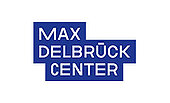Sleeping Beauty transposase variants with increased safety due to reduced half-life
Keywords
Sleeping Beauty, transposase, transposon, SB100x, nuclear export signal (NES), half-life, biosafety, gene & T cell therapy
Invention Novelty
Gene therapies are associated with great expectations, as they have the potential to cure a wide range of diseases. However, therapeutic success does not only depend on the simplicity, cost-efficiency, and scalability, but also decisively on the safety and efficacy of the gene transfer system employed. A particularly well-characterized and efficient gene transfer system is the non-viral Sleeping Beauty (SB) system, which consists of a transposon carrying the gene of interest (GOI) and a transposase that facilitates the integration of the GOI. To avoid undesirable genotoxic effects, the transposase should remain in the nucleus only until the GOI has been successfully integrated. Otherwise, an already integrated GOI could be removed or remobilized, posing the risk of genomic instability. Moreover, the SB transposase tends to aggregate, and its accumulation in the nucleus causes toxicity and impairs cell viability. The present invention provides SB transposase variants with reduced half-life while fully maintaining integration efficiency, thus enabling much safer gene and T cell therapies.
Value Proposition
The SB systems is one, if not the, most thoroughly studied transposon systems, which can be and has been exploited for a wide spectrum of gene editing applications, incl. generation of transgenic cell lines, reprogramming of stem cells, gene transfer in animals, as well as gene therapy. To further improve and enhance the biosafety of the SB system for gene therapeutic application, the invention provides SB transposase variants with substantially reduced half-life, while retaining full integration efficiency.
Technology Description
SB transposase, including the currently most widely used hyperactive variant SB100x, is a DNA modifying enzyme that localizes and acts in the nucleus and has a half-life of more than 30 h, posing an inherent risk for genotoxicity and genomic instability. To address these issues, the SB100x gene was modified to mediate the N-terminal fusion of an optimized nuclear export signal (NES) and a chaperone-mediated autophagy (CMA) signal to facilitate nuclear export and routing to the lysosomal degradation pathway, respectively. The resulting fusion protein (NES-CMA-SB100x) showed the intended reduction of half-life, but at the same time, also an undesired loss of transfection efficiency (see Figure). To restore the latter, extensive profiling and optimization of SB100x mRNA was performed, as mRNA represents the preferred mode of delivery of the transposase for gene therapy applications. Profiling included (i) codon optimization, (ii) modification of untranslated regions, (iii) variation of the length of the poly(A) tail, and (iv) introduction of modified nucleotides, and resulted in NES-CMA-SB100x variants with the desired properties and safety profile for clinical applications. The variants are currently combined and tested with other recently identified SB100x mutants to further improve the safety (see TO 03-00541) and efficacy (see TO 03-00542) of the SB100x system.
Commercial Opportunity
The SB system and the improved SB transposase variants are available for in-licensing.
Development Status
Properties (incl. half-life and integration efficiency) of SB100x variants have been extensively studied in vitro in human cell lines and are currently further validated.
Patent Situation
Priority-establishing EP23190240.4 has been filed in August 2023.
Further Reading
Pille, Izsvak, et al., 2023, manuscript in preparation.





